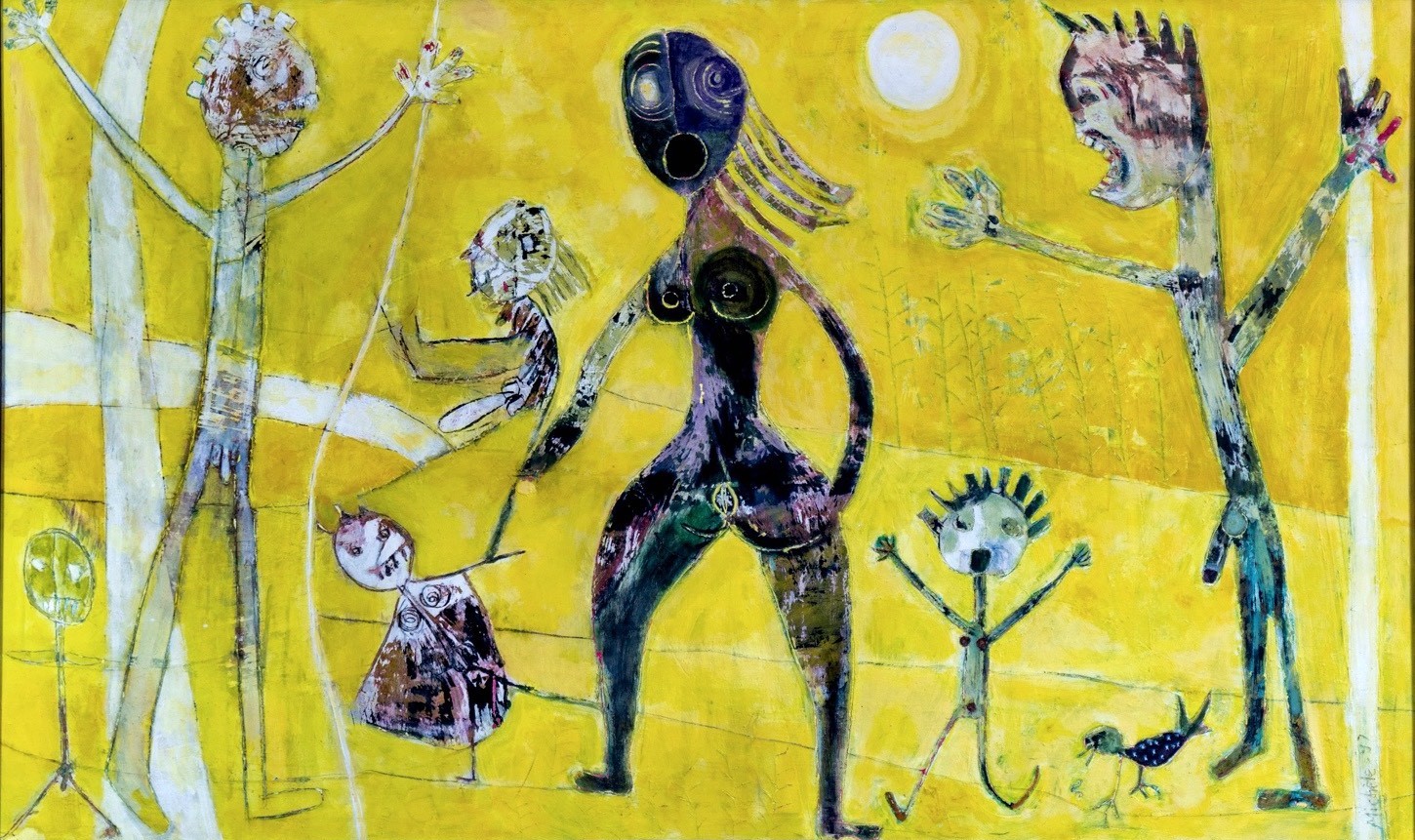Haitian Artist Addresses Tragedy of 2010 Earthquake Through Poignant Artwork
 |
| Photo credit: Michèle Voltaire Marcelin Facebook.
A month after the Haiti earthquake, Michèle Voltaire Marcelin decided to go back to her home city of Port-au-Prince. While she was traversing the streets, she saw nothing but destruction surrounding her, as the city that she knew from the soles of her feet had been completely and utterly destroyed.
An accomplished artist who has been creating for decades, Marcelin chose to convey the raw emotions she felt when she went back to Haiti through poetry and artwork. She says she could feel ahead of time that something awful would happen in her home country.
“The artwork was almost like a disaster foretold because the work had been done prior to the earthquake. It just had not been named. It was waiting for its name,” says Marcelin, 65. “It’s like having a dream and you can’t understand the message in the dream until the event occurs.”
She has created three pieces about the earthquake that are different in their use of color and texture.
“Magnitude Seven Point One” depicts panicked, human-like figures against a background of stark yellow. She says that people have told her that it’s very difficult for them to stand in front of the painting because they are reliving the disaster.
Magnitude Seven Point One
The destruction of the city’s beloved Cathédrale Notre-Dame de Port-au-Prince, an ivory-white Victorian-era structure, is the subject of another one of her pieces. Titled “Broken Stones,” the painting shows a woman’s head crowned by a piece of wrought-iron encircled by off-white color wood.
“Regarding Loss” juxtaposes a woman with a ghastly white pallor, hollowed eyes and wispy hair with streaks of color against a white background.
She says she wants people to feel that she has been as truthful as she can be through her artwork and that she hasn’t tried to smooth things over or to shock anyone.
In addition to painting, she also writes and performs poems about the earthquake, titled “The Rift” and “The Thing.”
“The Rift” came to her when she realized the disaster highlighted that Haitian society was fragmented and divided among the “haves” and the “have-nots.”
“The Rift” was about more than the plates underneath the Earth that shocked. It was the fact that we were not each other’s saviors,” Marcelin says. “If I wanted somebody to take anything away from looking at my artwork regarding the earthquake, it would be to realize that it is time to mend those rifts and put differences aside. It is time for us to really become our brothers’ and our sisters’ keepers.”
Regarding Loss
Although she will never forget about the earthquake, Marcelin says that she does not plan on creating more artwork about it because Haiti has not moved forward since 2010.
“It’s not about creating something new because the situation hasn’t changed,” Marcelin says. “If it hasn’t changed, why do you have to write something new about it? We need to change the situation.”
She writes in ‘The Rift” that the solution is for the Haitian people to be proactive and actively work on building a better country.
“Whether their lives and deaths were for hope, a new beginning or for nothing, we will decide. Let the dead bury the dead. The living must change the world.”
This article was originally published in The Haitian Times.
|




Comments